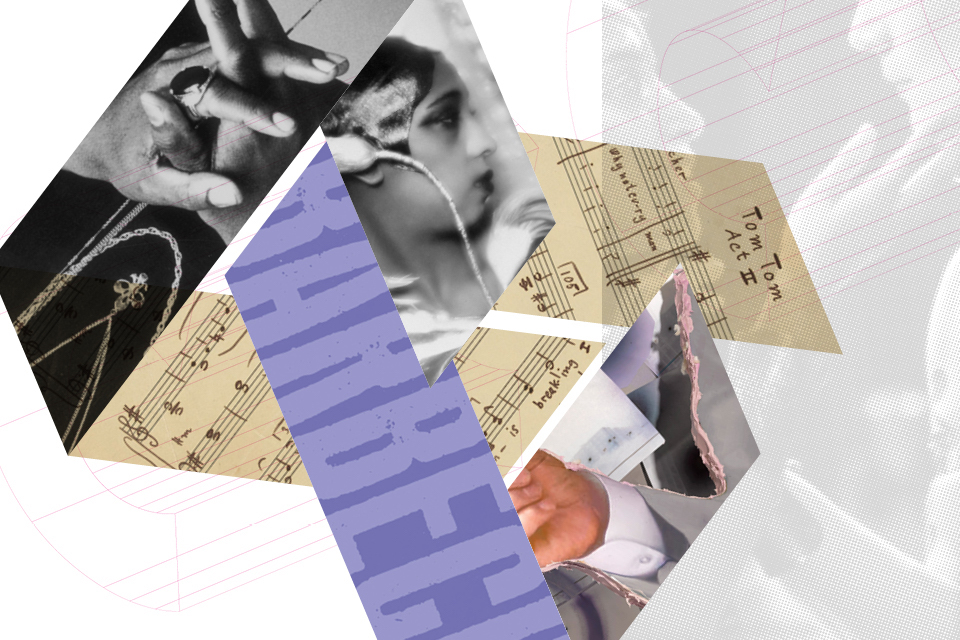Can art tell us who we really are?
In a upcoming Critical Conversation, faculty members will explore how our self-identity is challenged by works of art.
 Collage by Jessica Tanny
Collage by Jessica TannyWho am I?
It's a three-word question to which there are almost an infinite number of answers.
But one place to start is art.
"Art can be a powerful tool for interrogating ideas about identity that are put forward by mainstream society," says assistant professor of theater arts Isaiah Wooden.
In March, Wooden and professors Sheida Soleimani and lauren woods will participate in an hour-long forum for first-year students entitled "Art and the Politics of Representation."
They will discuss questions like these: How does art represent and express identity? How do artists complicate our understanding of identity? And how do such artistic mediums as theater and photography force us to reevaluate who we are?
The event is part of "Critical Conversations," a series of talks held during the academic year that invites students to think about issues central to the world around them. The discussions feature professors discussing a subject from the perspective of their field of research as well as talkbacks and a question-and-answer session with students.
At the Critical Conversation on art and identity, Wooden will speak about how drama can transform how we think about gender, class, race and sexuality.
"One of the things that is unique about theater is that we get to see things represented before us live and in action, but with enough critical distance to assess them," he says. "We get to decide whether we want to participate in society's definitions of identity or if we want to subvert or transgress them."
In addition to teaching at Brandeis, Soleimani is a photographer and multimedia artist. Her parents are political refugees who were persecuted by the Iranian government in the early 1980s during the Iranian Revolution. Her work, exhibited worldwide, has explored war, the oppression of women and even the power of oil in shaping the world economy.
"Photographs have been used historically to oppress and marginalize individuals but have also been used to create discussions around identity and power," she says. "Through this Critical Conversation, I hope that students will consider how their camera can be both a tool and a weapon."
Categories: Student Life





